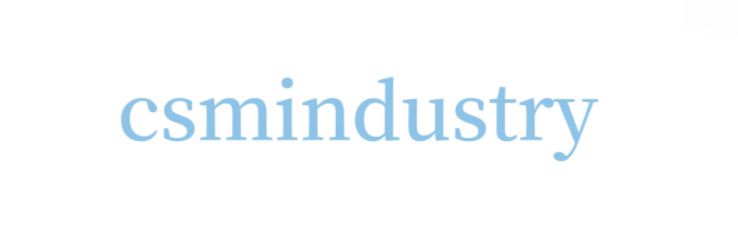How Does Insulation Power Factor Affect Energy Savings?
Understanding how insulation power factor affects energy savings is vital for homeowners looking to optimize their energy usage and reduce costs. Insulation power factors can significantly influence energy efficiency and performance in residential and commercial properties. Below, we will explore the steps to evaluate and improve insulation to enhance energy savings effectively.
Want more information on insulation power factor test? Feel free to contact us.
What is Insulation Power Factor?
Insulation power factor refers to how well insulation materials resist heat flow while maintaining energy efficiency. A higher power factor indicates better insulation performance, leading to reduced energy consumption.
Steps to Evaluate and Improve Insulation Power Factor for Better Energy Savings
1. Assess Your Current Insulation
Check Existing Materials: Inspect your home for insulation types currently in place.
Most homes contain fiberglass, foam board, or spray foam insulation. Knowing what you have is essential for measuring performance.
2. Conduct an Insulation Power Factor Test
Hire a Professional or DIY: Consider hiring a professional or utilizing a DIY kit to assess your insulation power factor.
This test will provide insights into how effectively your insulation prevents heat loss or gain. Professional assessments often include thermal imaging, revealing weak spots.
3. Identify Areas for Improvement
Locate Drafts and Weak Spots: Use results from the insulation power factor test to find areas needing enhancement.
Common trouble spots include attics, basements, and around windows. For instance, if your attic reveals significant heat loss, it may require additional insulation.
4. Select Suitable Insulation Materials
Choose High-Quality Insulation: Opt for materials with a high R-value, which measures insulation effectiveness.
Materials such as spray foam or cellulose often have higher R-values, contributing to better energy efficiency.
5. Ensure Proper Installation
Follow Manufacturer Guidelines: Proper installation is crucial for insulation efficiency and ensuring optimal power factor.
For example, when installing fiberglass batts, ensure there are no gaps or compression, as this can reduce effectiveness significantly.
6. Consider Additional Energy-Efficient Improvements
Combine Efforts: Look into other energy-saving methods, such as sealing air leaks and upgrading windows.
A comprehensive approach not only enhances insulation power factor but also leads to greater energy savings in the long run.
7. Monitor Energy Usage Regularly
Track Your Consumption: After improvements are made, monitor your energy bills to evaluate the effectiveness of changes.
Look for a noticeable decrease in your monthly expenses to gauge the impact of enhanced insulation power factor.
Applying These Steps in Real Scenarios
When evaluating an older home, you might find outdated insulation materials that lead to high energy costs. By testing the insulation power factor and identifying areas for improvement, such as adding new insulation or sealing air leaks, homeowners can significantly reduce energy bills.
In commercial buildings, regular assessments can help maintain energy efficiency standards, compliance with regulations, and lower operational costs.
In summary, understanding and improving insulation power factor can lead to significant energy savings. By conducting thorough evaluations, utilizing quality materials, and ensuring proper installation, you can enhance the performance of your insulation, leading to a more energy-efficient and cost-effective property.
Explore more:Top Electronics Test Equipment Trends to Watch in 2025
What is Insulation Power Factor?
Is Your Tan Delta Tester Accurately Detecting Insulation Failures?
How to Use the PF Factor Formula Effectively
Insulation power factor refers to how well insulation materials resist heat flow while maintaining energy efficiency. A higher power factor indicates better insulation performance, leading to reduced energy consumption.
Steps to Evaluate and Improve Insulation Power Factor for Better Energy Savings
1. Assess Your Current Insulation
Check Existing Materials: Inspect your home for insulation types currently in place.
Most homes contain fiberglass, foam board, or spray foam insulation. Knowing what you have is essential for measuring performance.
2. Conduct an Insulation Power Factor Test
Hire a Professional or DIY: Consider hiring a professional or utilizing a DIY kit to assess your insulation power factor.
This test will provide insights into how effectively your insulation prevents heat loss or gain. Professional assessments often include thermal imaging, revealing weak spots.
3. Identify Areas for Improvement
Locate Drafts and Weak Spots: Use results from the insulation power factor test to find areas needing enhancement.
Common trouble spots include attics, basements, and around windows. For instance, if your attic reveals significant heat loss, it may require additional insulation.
4. Select Suitable Insulation Materials
Choose High-Quality Insulation: Opt for materials with a high R-value, which measures insulation effectiveness.
Materials such as spray foam or cellulose often have higher R-values, contributing to better energy efficiency.
5. Ensure Proper Installation
Follow Manufacturer Guidelines: Proper installation is crucial for insulation efficiency and ensuring optimal power factor.
For example, when installing fiberglass batts, ensure there are no gaps or compression, as this can reduce effectiveness significantly.
6. Consider Additional Energy-Efficient Improvements
Combine Efforts: Look into other energy-saving methods, such as sealing air leaks and upgrading windows.
A comprehensive approach not only enhances insulation power factor but also leads to greater energy savings in the long run.
7. Monitor Energy Usage Regularly
Track Your Consumption: After improvements are made, monitor your energy bills to evaluate the effectiveness of changes.
Look for a noticeable decrease in your monthly expenses to gauge the impact of enhanced insulation power factor.
Applying These Steps in Real Scenarios
When evaluating an older home, you might find outdated insulation materials that lead to high energy costs. By testing the insulation power factor and identifying areas for improvement, such as adding new insulation or sealing air leaks, homeowners can significantly reduce energy bills.
In commercial buildings, regular assessments can help maintain energy efficiency standards, compliance with regulations, and lower operational costs.
In summary, understanding and improving insulation power factor can lead to significant energy savings. By conducting thorough evaluations, utilizing quality materials, and ensuring proper installation, you can enhance the performance of your insulation, leading to a more energy-efficient and cost-effective property.
If you want to learn more, please visit our website pf factor formula.


